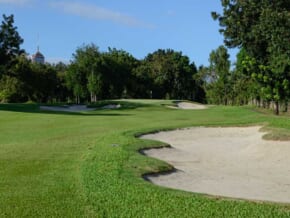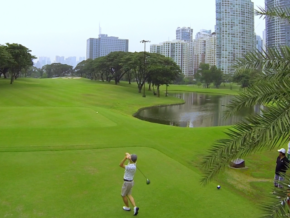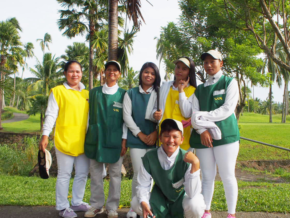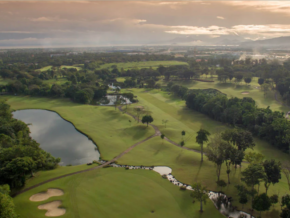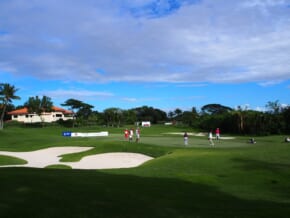NAGANO, JAPAN: A Complete Guide to Matsumoto, Hakuba and Suwa for Filipinos
There are a lot of reasons why Nagano is becoming a popular destination in Japan. It’s more than just a prefecture with an efficient transportation system, safe environment and kind locals. With its remarkable cultural sites, fun outdoor activities, and delicious local food, Nagano can surely make any visitor fall in love with it the second time around.
Last issue, we introduced you to Nagano’s snow monkeys, the best spots in Karuizawa, the temples in Nagano City, and the food stops in Matsumoto. In this second part of our Nagano Special, get to know more about the southern part of Nagano—starting with Matsumoto, a modern city with a deep respect for southern tradition in a maze of contemporary structures and rich historic sites.
Also read: It’s time to meet Nagano, Japan — Part 1
Matsumoto Castle

“Outstanding” would be the word to best describe Matsumoto Castle. One of Nagano’s prominent tourist spots, it was built between 1593 to 1594. It was declared as a national treasure, and was carefully restored and preserved for a long time. It’s known as the “Crow Castle” because of its black structure made of wood and plaster. It rests on top of a stone base and is surrounded by a crystal clear moat that, if you stand on the right spot outside, you can see the castle’s reflection. During the cherry blossom season, the structure creates a beautiful contrast with pink hues.
Around Matsumoto neighborhood

Samurai guards

Nawate Street

Street Food in Nawate Street

Nakamachi Street

Matsumoto Catholic Church
Read more about Matsumoto Castle and Matusmoto neigbohood here.
Hakuba

Ski Jumping Stadium
Hakuba’s powdery snow makes its slopes great for advances skiing and snowboarding in Japan. Home of the 1998 Winter Olympics, Hakuba is one of the East Asia’s largest ski resorts. Some of the structures like the Ski Jumping Stadium, are still operational until today. It encompasses 10 ski resorts, comprising the Hakuba Vallye. The village may only have 9,000 residents, but Hakuba attracts 3 million tourists every year because if its powdery snow.
Hakuba Lion Adventure

Trying the snowmobile
Hakuba Lion Adventure is an outdoor activity company in Hakuba that offers white water rafting, canoeing, hot air balloon rides, and snowmobiling. Hakuba Lion Adventure also operates a cafe and rental shop for those who need a complete set of gear during the tour. Our day in Hakuba started in Lion Cafe, where we met the Hakuba Lion Adventure team who guided us through the day.
The guides made sure we felt safe and had a good time during the entire activity. Our team navigated our Ski-doo at the riverside of Hakuba 47 Winter Sports Park. Our tour guide, Yu, was very patient and really paid attention to us. Together with his co-instructor, Shelley, they made sure to stay close in case we got stuck in the snow.
Read more about Hakuba Lion Adventure here.
Hakuba 47

One of the most popular ski resorts in the area is Hakuba 47. The name comes from the idea of “4 seasons, 7 days a week.” The resort offers a variety of terrain for different types of skiers. This, along with the quality if their snow, sets Hakuba 47 apart from other resorts in Hakuba Valley.
For beginners, the resort offers ski and snowboard lessons in English which is quite convenient. It’s a great place for a beginner to experience the slopes.
Hakuba 47 is a few kilometers away by road from Hakuba train station and 5 km rom Happo, the main tourist hub of Hakuba Valley.
Read more about Hakuba 47 here.
Brownie Cottages & Condominiums

Conveniently located at the center of Hakuba Village, Brownie Cottages & Condominiums is the perfect accommodation whilst skiing in Hakuba. Owned by a Japanese man and his Filipina wife, Brownie is like your home away from home. The cottages are just a short stroll from Echoland Main Street where the bars and shops are located. The rooms inside are spacious and the beds are very comfortable. The kitchen is well-equipped with dishes and cutlery. Other amenities, like drying storage and Wi-Fi, are also available inside the cottage.
Read more about Brownie Cottages & Condominiums here.
Daio Wasabi Farm

The very entertaining wasabi master, Mr. Shigetoshi Hama
Wasabi is a very important product of Japan, whose demand has increased significantly throughout the years. The lovely early autumn morning had us making our way to visit Daio Wasabi Farm that is located in the outskirts of Matsumoto.
Daio Wasabi Farm is one of the largest wasabi farms in Japan. Here, we were welcomed by the wasabi master himself, Mr. Hama. Daio Wasabi Farm is like a park complete with restaurants, shrines, and souvenir shops that sell wasabi-related products.
After a day of touring, you can have your dinner at Sarugaku restaurant and get a delicious teppanyaki.
Read more about Daio Wasabi Farm here and Sarugaku restaurant here.
The Wonders of Norikura Kogen
Our team dropped by Gurinderu Restaurant to have lunch on the way to our next destination. Here, we had one of the famous dishes of Nagano – soba noodles!
Read more about Gurinderu Restaurant here.

Frozen Zengorou Falls
After a very healthy lunch, we headed for Norikura Kogen to try snowshoe hiking. We changed into our snow gear at Sanoya where we met our guide Mr. Sasaki, the owner of Sanoya Hotel in Norikura. Getting to and from the slopes in Norikura was a breeze, as it is not that hard for beginners. It’s a 30-minute zigzag ascent to get to our destination—the frozen Zengorou falls. The frozen waterfall glistens to a stunning blue color when hit by sunlight.
Read more about the The Wonders of Norikura Kogen in Nagano, Japan

Illumination display
Our day ended at the ALPS Azumino National Government Park to watch the illumination display. It is a popular destination for amazing illumination displays during winter with over 70,000 light bulbs that flicker in time with music.
Luckily, our team had the chance to watch the installation last January. The park’s theme then was the 4 seasons of Japan. Each area had its own design: cherry blossom lights for spring; Christmas tree lights for winter; and flowers for summer. If you want to see this sparkling creation, make sure to include Azumino’s illumination park in your Nagano itinerary.
The illumination display is available from November to early January.
Read more about ALPS Azumino National Government Park here.
Gishodo Suwako Watch & Clock Museum

Suwa is known as the origin of watch-making in Japan. On our first day in Suwa, we visited Gishodo, a unique museum for clocks. The museum features a novelty shop and a fascinating exhibit room filled with old wall clocks. The museum also offers clock-making lessons. Our clock-making prowess was tested when they asked us to make one for ourselves, with help from the staff, of course.
It was a fun experience that you wouldn’t want to miss. Outside the museum is the water-operated astronomical clock tower known as Suiun-Gishodai. The big clock is a replica of the one constructed in China.
Read more about about watch-making here.
Suwa Taisha (Grand Shrine)

Our next stop was at the famous 1,200-year-old Shinto Shrines. Suwa is home to four shrine complexes namely Maemiya, Honmiya, Harumiya and Akimiya. Two of them, Maemiya and Honmiya, are located southeast of Lake Suwa and make up the Kamisha (upper shrines). Harumiya and Akimiya, on the other hand, make up the Shimosha (lower shrines) and are located northwest of Lake Suwa.
We enjoyed the peaceful atmosphere of each shrine and saw lumbers being used for the Onbashira festival, a ritual wherein Japanese people ride tree logs which slide down the slope that is held every 6 years. Make your visit in Suwa a memorable one by paying respect in one of these shrines.
Read more about Suwa Taisha here.

We made our way to the Garasunosato Museum on our last day in Suwa. Garasunosato is a glass museum that displays glass pieces by famous glass work artists of Suwa. The museum showcases 20,000 pieces of glass products. Some of the pieces here change with the seasons but there are permanent displays as well. Guests can experience making glass candles, seals, beads and paperweights.

A few minutes away from the glass museum is the strawberry farm where we had the sweetest strawberries we’ve ever tasted. The farm offers a 30-minute strawberry picking experience in which visitors may pick and eat as many strawberries as they like.
Read more about Garasunosato Museum and Strawberry Farm here.
Alpico Group

Founded in 1920, the ALPICO Group has been providing comfortable and convenient stays in Nagano. This comprehensive company manages transportation (bus and taxi), hotels, and Japanese-style ryokan. The ALPICO Group operates 5 hotels around Matsumoto and Suwa. Each accommodation maximizes the features of its location and offers one of a kind experience to its guests. The sights of Nagano Prefecture can be enjoyed all throughout the year and ALPICO Group is your reliable friend in this trip.
Read more about Alpico Group, hotels and transportation here.

Hotel Buena Vista is a city hotel located near the Matsumoto Castle. Its convenience and accessibility made it a top choice for tourists in Matsumoto. The staff can speak English and are very knowledgeable, not only about the hotel’s amenities, but also about the sightseeing spots in Matsumoto.

Sousen-no-yado Suhaku is one of the most beautiful Japanese-style ryokans in Suwa. Located along the Lake Suwa, the hotel is a good starting point if you want to visit other tourist destinations in the area.
During August, Suwa celebrates one of Japan’s largest fireworks festivals. Guests can enjoy this sparkling view from the hotel’s private onsen or from some of the hotel rooms that’s facing Lake Suwa.
Other hotels that ALPICO group manages are Ace Inn in Matsumoto, a small to medium sized-hotel ready to accommodate guests for a reasonable price; Hotel Shoho, a luxury hotel located at the mountainous area of Nagano; and Kamikochi Lameista Hotel, where you can have a quiet retreat and commune with nature in the quieter part of Kamikochi.

ALPICO Group is also a Japanese bus operator that provides highway transportation services. The main goal of the company is to give passengers a safe and comfortable trip to and within Nagano. ALPICO Highway Bus can accommodate groups coming from Shinjuku or Nagoya and take you around Matsumoto City. Tourists can also use the ALPICO taxi or local bus to visit destinations like Wasabi Farm, Hakuba, Norikura, or the shrines in Suwa. ALPICO also offers transfers to Nagano City and Hakuba.
Also read: 10 reasons why Nagano, Japan should be your next destination this 2017
Directory
GO! NAGANO (Nagano Prefecture Official Tourism Guide)
www.go-nagano.net
The Official Tourism Site of Matsumoto
welcome.city.matsumoto.nagano.jp/
ALPICO GROUP
www.alpico.co.jp/en/
Daio Wasabi Farm
1692 Hotaka, Azumino City, Nagano
Soba Café Gurinderu Restaurant
3365-1 Azumi, Matsumoto City, Nagano
Sanoya Hotel
4085-56 Azumi, Matsumoto City, Nagano
ALPS Azumino National Government Park
33-4 Horigane Karasugawa, Azumi city, Nagano
Hakuba Valley
www.hakubavalley.jp/english/
Hakuba Lion Adventure
hakuba.lion-adventure.com/
Hakuba47 Winter Sports Park
www.hakuba47.co.jp/en/
Hakuba Brownie Cottages & Condominiums
2937 Misorano Hokujo, Hakuba Village, Nagano
Sarugaku Restaurant
3020-957 Hokujo, Hakuba Village, Nagano
Suwa Tourist Information
suwakanko.jp/en/
SUWA Garasu-no-sato Museum (Glass Museum)
2400-7 Toyoda, Suwa City, Nagano
Shimosuwa Travel Guide
shimosuwaonsen.jp/travel/
Gishodo (Suwako Watch & Clock Museum)
3289 Shimosuwa Town, Nagano
This story first appeared in Philippine Primer magazine April 2017 issue page 16.
